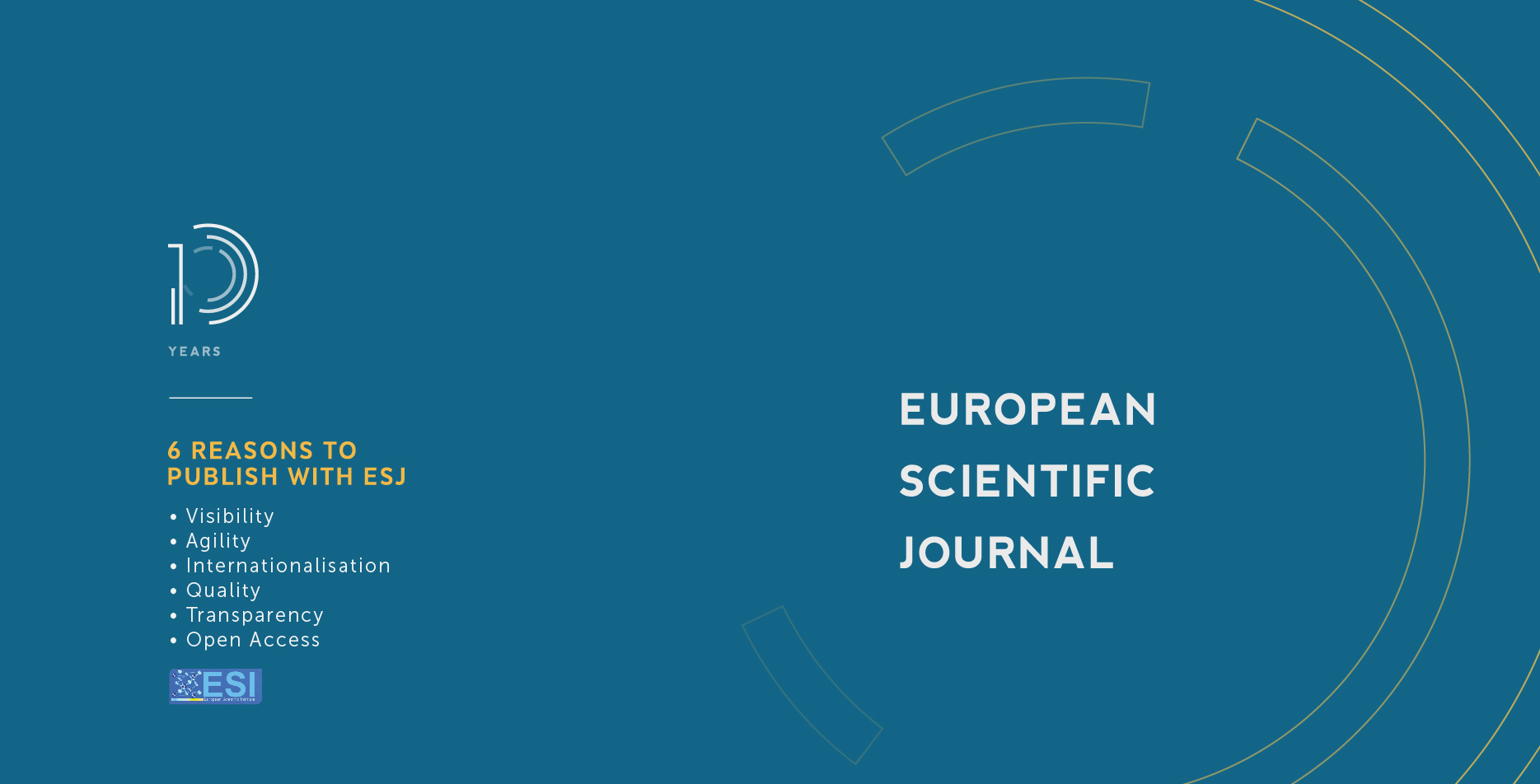Understanding Strategy Implementation: Progress along Performance of Meru County Government in Kenya
Abstract
Below-average performance is a characteristic that has been common to many county governments in Kenya. The counties, formulate a County Integrated Development Plan as a guiding roadmap for five years. Besides the well-formulated strategies in Meru County, performance and effective service delivery have not been satisfactorily achieved. This study was designed to investigate the strategy implementation and performance of the Meru County Government. The study’s specific objectives were; to determine the effects of resource allocation, organizational culture, leadership, and organizational structure on strategy implementation and performance of Meru County Government. The variables of the study were measured using their respective indicators as follows. Resource allocation; finance and human resources. Organizational culture; values and goals. Leadership; style and leaders’ experience. Organizational structure; degree of decentralization. Performance; service delivery and county infrastructural development. Data was collected using a questionnaire with a Likert scale type of questions. The study targeted 291 employees of Meru County Government and a descriptive research design was used. Multiple regression analysis was used to analyze data. Findings indicated that the above-outlined variables had a positive and significant influence on the county government’s performance. The study among others recommends that; the county government should allocate adequate resources for the execution of its strategies, and to improve organizational leadership, the management should have more employees contribute to decision-making and periodic workshops and/or training should be held for all staff. On organizational structure; promoting interdepartmental learning and creating a short chain of command can help transform performance for the better.
Downloads
Metrics
PlumX Statistics
References
2. Ashby, W. R. (1956). An Introduction to cybernetics. London: Chapman & Hall.
3. Augier, M., & In Teece, D. J. (2018). The Palgrave encyclopedia of strategic management.
4. Bamgbade, J. A., Kamaruddeen, A. M., Nawi, M. N. M., Yusoff, R. Z., & Bin, R. A. (2018). Does government support matter? Influence of organizational culture on sustainable construction among Malaysian contractors. International Journal of Construction Management, 18(2), 93-107.
5. Barbier, E. B. (2005). Natural resources and economic development. Cambridge University Press.
6. Barney, B. (1991). Firm resources and sustained competitive advantage. Journal of Management. 17 (1): 99–120
7. Brinkschröder, N. (2014). Strategy implementation: Key factors, challenges and solutions (Bachelor’s thesis, University of Twente).
8. Chemiat, J. C. & Kiptum, K. G. (2018). Relationship between employee performance appraisal initiative and strategy implementation at Moi Teaching and Referral Hospital in Eldoret, Kenya. International Academic Journal of Human Resource and Business Administration, 2(3), 46-63
9. Dagnino, G. B. (2012). Handbook of research on competitive strategy.
10. Davis, B., (2021). Home. Mvorganizing.org. Available at: https://www.mvorganizing.org/what-is-an-advantage-to usingables/#:~:text=The%20advantages%20of%20using%20tables
%20and%20graphs%20to%20organize%20data,according%20to%20Texas%20A%26M%20University. [Accessed August 23, 2021].
11. Verweire, K., 2014. Strategy implementation. 1st ed. London.
12. Ejimabo, N. O. (2015). The influence of decision making in organizational leadership and management activities. Journal of Entrepreneurship & Organization Management, 4(2), 2222-2839.
13. Goethals, G. R., Sorenson, G. J., & Burns, J. M. G. (2004). Encyclopedia of leadership. Thousand Oaks, Calif: Sage Publications.
14. Hantiro, S., B. & Maina, R. (2020). Strategy Implementation and Performance of Tana River County Government, Kenya. Journal of Strategic management, 4(1), 16-34
15. Hitt, M. A., Jackson, S. E., Carmona, S., Bierman, L., Shalley, C. E., & Wright, D. M. (2017). The future of strategy implementation. In The Oxford handbook of strategy implementation.
16. InfoTrak, (2020). The County Rank Performance Index
17. Jackson, M. C. (2000). Applied Systems Thinking. Systems Approaches to Management, 91-104.
18. Joseph, O. O., & Kibera, F. (2019). Organizational Culture and Performance: Evidence From Microfinance Institutions in Kenya. SAGE Open. https://doi.org/10.1177/2158244019835934
19. Kaplan, R. S., and Norton, D. P. (1992). The Balanced Scorecard: Measures that drive performance. HarvardBusiness Review, 71-79.
20. Kozak, K. (2015). Statistics using technology. Lulu. com.
21. László, E. (1972). The relevance of general systems theory: : papers presented to Ludwig von Bertalanffy on his seventieth birthday. New York (N.Y.: Braziller.
22. Ngumbi, F. M., & Wambua, P. (2019). Organizational resources and strategic plans implementation in administration police service in Baringo County, Kenya. European Journal of Business and Strategic Management, 4(4), 14-33.
23. Niven, P. R. (2008). Balanced scorecard: Step-by-step for government and nonprofit agencies. John Wiley & Sons.
24. Ongeti, W. J. (2014). Organizational resources, corporate governance structures and performance of Kenyan state corporations (Doctoral dissertation, University of Nairobi).
25. Penrose, E. (1959). The theory of the growth of the firm. Oxford [u.a.: Oxford Univ. Pr.
26. Prahalad, C. K., & Hamel, G. (2009). The core competence of the corporation. In Knowledge and strategy (pp. 41-59). Routledge.
27. Sashkin, M. (2004). Transformational leadership approaches: A review and synthesis.
28. Setiawan, B. M., Putrawan, I. M., Murni, S., & Ghozali, I. (2016). Effect of organizational structure, leadership and trust on job performance of employee: A case study on employee at Universitas Ternama. International Review of Management and Marketing, 6(4), 711-712.
29. Towler, A., 2022. The qualities of transformational leaders and what distinguishes them from transactional leaders | CQ Net - Management skills for everyone. [online] CQ Net - Management skills for everyone!. Available at:
30. Verweire, K. (2014). Strategy Implementation (1st ed.). Routledge.
https://doi.org/10.4324/9781315849447
31. Von Bertalanffy, L. (1950). An outline of general system theory. British Journal for the Philosophy of science.
32. Wernerfelt, B. (1980). A resource‐based view of the firm. Strategic management journal, 5(2), 171-180.
33. Wilkinson, A., & Wood, G. (2017). Global trends and crises, comparative capitalism and HRM. The International Journal of Human Resource Management, 28(18), 2503-2518.
34. WoldBank. (2021). Kenya's Devolution Retrieved 5 October 2021, from https://www.worldbank.org/en/country/kenya/brief/kenyas-devolution
35. Wire, B. (2021). Kenya Construction Industry Report 2020 - ResearchAndMarkets.com. Retrieved 10 August 2021, fromhttps://www.businesswire.com/news/home/20210308005442/en/Kenya-Construction-Industry-Report-2020 ResearchAndMarkets.com
36. Zhang, Y. F., Hoque, Z., & Isa, C. R. (2015). The effects of organizational culture and structure on the success of activity-based costing implementation. In Advances in Management Accounting. Emerald Group Publishing Limited.
Copyright (c) 2022 Kelvin Mutuma Ntoiti, Stephen Muathe Makau

This work is licensed under a Creative Commons Attribution-NonCommercial-NoDerivatives 4.0 International License.








